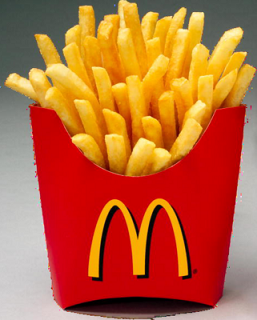I started taking Oats for breakfast recently. I mean, it is not a regular thing but say, a couple of times a week to begin with. My doctor keeps giving his sermons about the Oats benefits as a great fibre food that cleanses the system and as a great cholesterol lowering food. And I do agree with him to some extent.
The topic of interest though is not exactly the benefits of oats or healthy diet but how, of late, the food culture in India is changing to benefit the big multi-national brands. Having oats or cereals for breakfast may be a great healthy option but is it something light on your wallet as well? Why are these MNCs – Multi National Food Companies in India – charging us big time for those products that actually cost one tenth of their MRP (Maximum Retail Price) to produce?
Examples of MNC abuse
The following are some of the great examples of brand abuse by multi-national brands.
McDonald’s French Fries
 Potato is something that is available in abundance in India and McDonald’s didn’t invent it for sure nor is its usage patented by them. We have been cooking potato based curries for 100s of years now and never used it as a main dish. One small portion of French fries cost around 45 rupees ($1) in McDonald’s. The retail price of potato is around 12-15 rupees per kilo and in wholesale sourcing may be at 5-6 rupees. One big potato is all that goes into one small order of fries and hence 1 rupee worth raw material (plus say 1 or 2 rupees worth of oil) is translated to Rs. 45/-. How’s that?
Potato is something that is available in abundance in India and McDonald’s didn’t invent it for sure nor is its usage patented by them. We have been cooking potato based curries for 100s of years now and never used it as a main dish. One small portion of French fries cost around 45 rupees ($1) in McDonald’s. The retail price of potato is around 12-15 rupees per kilo and in wholesale sourcing may be at 5-6 rupees. One big potato is all that goes into one small order of fries and hence 1 rupee worth raw material (plus say 1 or 2 rupees worth of oil) is translated to Rs. 45/-. How’s that?
The same is the story with Pepsi’s Lays chips.
Coke and Pepsi
The cost of producing one litre of Coca cola in India is around 1 rupee I hear. This comes at the expense of tapping the ground water while denying the same for lakhs of people who do not get water for daily usage (Remember the big citizen protest against coke in Kerala – Read wiki story on Coke) and spoiling the environment by not having proper waste water management. The coke is sold at around 40 rupees per liter. Pepsi and Coke managed to kill its Indian competition by acquiring them and discontinuing their products, some of which were actually superior to these MNC brands. The result, you pay more for something that is not at all good for health. And the worst thing is that they are not using the same formulation in India as compared to what they do abroad nor are they sticking to any health, cleanliness and safety standards. Have you seen any coke bottle in India without rusted and dirty caps?
Pizza Hut Pizzas
I have been a big fan of certain pizza brands such as Papa Jones during my stay abroad. Pizza Hut being a big brand, I became an instant fan of the same when they started their operations in India. Initially, I didn’t spend sufficient time to understand their pricing strategy but soon realized that a good quality family size Pizza Hut pizza costs around 450 to 500 rupees. We are talking about the Supreme pizzas as most other things comes without any good toppings. Maida (fine flour) is the main ingredient in a pizza and it is available at a very cheap price in India. Then they top the pizza with a lot of tomatoes and onions (with very little olives, chicken or jalapenos here and there). Ideally this produce should be made available for something like 100-200 rupees for a top class pizza and not 500 for sure. i.e. even with the most expensive items there in, for example 5-10 rupee worth cheese and other stuff. Does anybody question?
Olive oil, Oats, Kellogs flakes etc
The case is much the same with Oats, flakes and what not? The traditional Indian flakes (e.g rice flakes) are something that used to be eaten only by those who lived under the poverty line and in general grains are very cheap in India. 1Kg of Quaker oats cost 120 to 140 rupees in India. Is it fair? Similar is what Kellogs is doing with its umpteen number of flavored flakes.
Olive oil is probably the only exception here because it’s not something that can be easily produced in India and hence need to be imported. I somehow tend to believe that the pricing logic there in cannot be really questioned.
Final thoughts
What I wanted to highlight here are two points. One is the need to avoid those multi-national branded food items that are not healthy. Coke, Pepsi, French fries etc fall into this category. And the second point is that, those healthy but heavily priced items need to be abolished (or their priced brought down) if they have to sell in India. Though we are said to be freed from the British, now we are becoming the slaves of these multi-national brands – even for day to day food requirements.
Can’t we really think of a life without (high-priced) junk food in India? Do you want the next generation to spend all their money on groceries, loans and gas like the way Americans do?
Think about it…
PS:- By the way, yours truly eat and like some of the western food items but only if the pricing and quality are right for me. I also, admit the fact, that there are some brands which are available at extremely good prices (e.g. 1L Tropicana 100% orange juice is available at Rs.85/- which is a great deal). But the McDonalds, Pizza Huts, Coke and Pepsi are the ones against whom we should fight.

Very interesting article, thanks. Keep up the good work.
we can avoid using these Pepsi and coke…but there is one prob if we go for a ride and we are thirsty which drink will u prefer a local brand or the mnc..for the safety sake we will opt a familiar brand… one thing we can do is to build a good desi brand…
@martin, when you are thirsty you should never drink cola. It will dehydrate you more 🙂 Btw, the I am not against the Aquafina or Kinley mineral water brands from these cola companies though as much as possible I drink Indian mineral water brands (Manikchand Oxyrich, Bisleri etc). As far as Indian colas are concerned, though its old taste is gone, I still like Thumsup (rarely taken with rum etc)
Ajith,
I agree with your thoughts about the fast food and multinational brands cashing on the Indian economy. But, it is sad to see that you endorse packaged driking water. Do you know the cost of producing 1 litre of water? It is in few paise, not even a rupee. Water is a human right, one can’t be denied of water, it is something nature gives and comoditizing it call total greed.
No one knows how much water these companies suck out of the ground and sell for Rs 15/16 per litre.
All the water bottling companies are owned by policians.
There is a big movement going on in the US against the bottled water. Our country has severe water crisis and in such a scenario allowing sale of water is the like sucking blood from our countrymen.
@Shesh,
I was just making a comparison between the 40+ rupees cola while 15 rupees water makes more sense. I am not a big fan of mineral water either as and when good quality tap water is available.
Great article .. We Indians are really fool
QUAKER OATS are very healthy ! There’s no replacement for Quaker oats. Every other brand is costlier. So, no discussion about Oats.
What About the cost of machinery,loan interest payment,manpower costs?Also Mc Donalds has a profit margin of around only 20%(google) but by what u are suggesting they are having 1000% and more profit margin.
Animesh,
20% may be their margin in the US, I won’t be surprised if it’s 80pc in India. By the way all those production aspects that you mentioned is applicable to other produces as well. E.g. Rs. 50 for small fries when the raw material cost is less than 2 or 3 rupees. For Rs.50/- you will get a meal in a South Indian restaurant and I am sure they may have to spend at least Rs.25 of raw material for that. The equation has to be different in countries like India which these MNCs are not caring about.
real type of juice are not real juice. only 10% are juice and rest are water/sugar and lots type of chemical/ preservatives. In the name of juice you are taking poison. But all agencies are managed. Branded are not very pure but very managed. We are taking poison in every bite.
Oats are grown in temperate regions. They have a lower summer heat requirement and greater tolerance of rain than other cereals, such as wheat, rye or barley, so are particularly important in areas with cool, wet summers, such as Northwest Europe; they are even being grown in Iceland to help prolong the growing season.;’;..